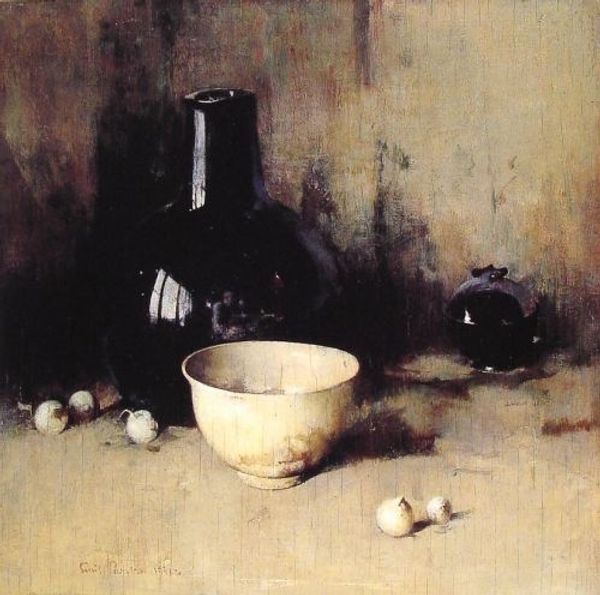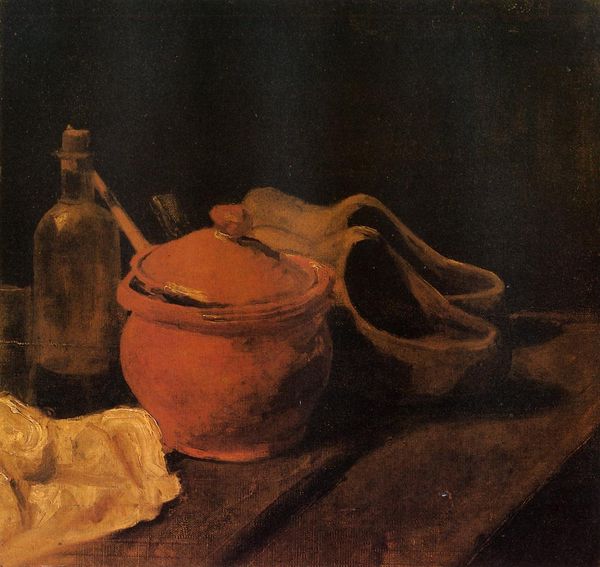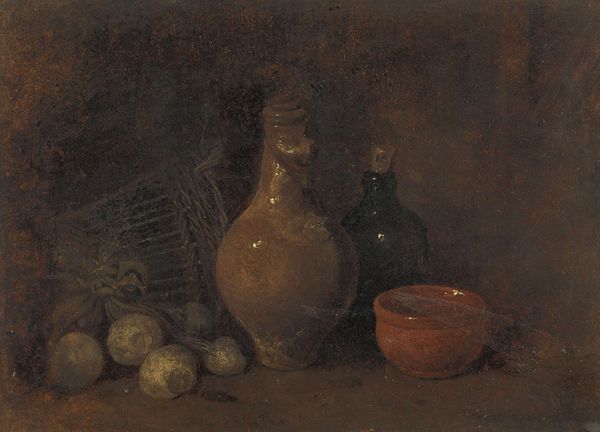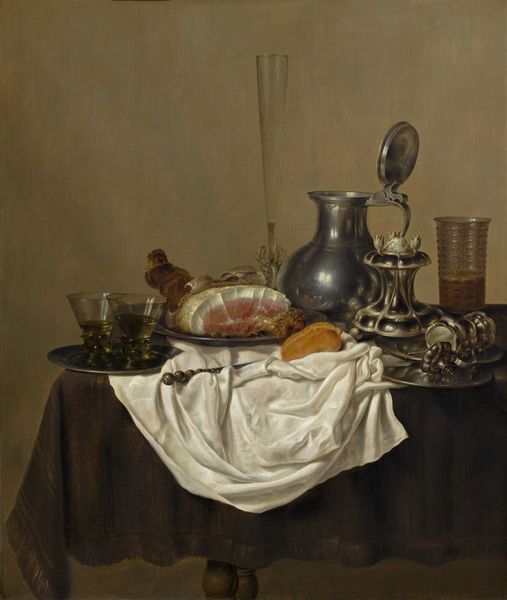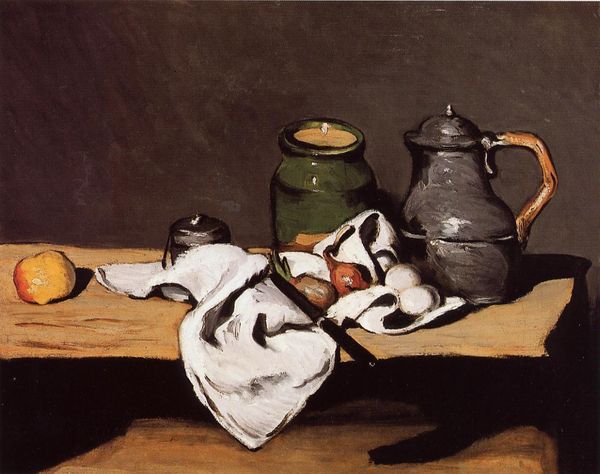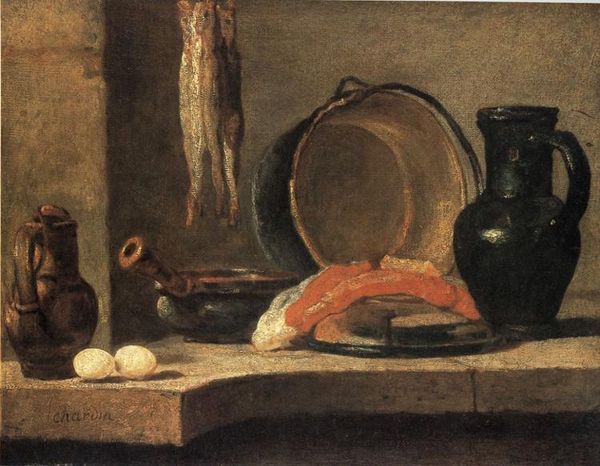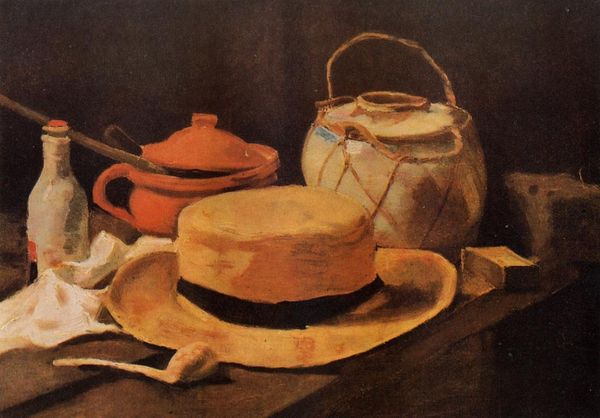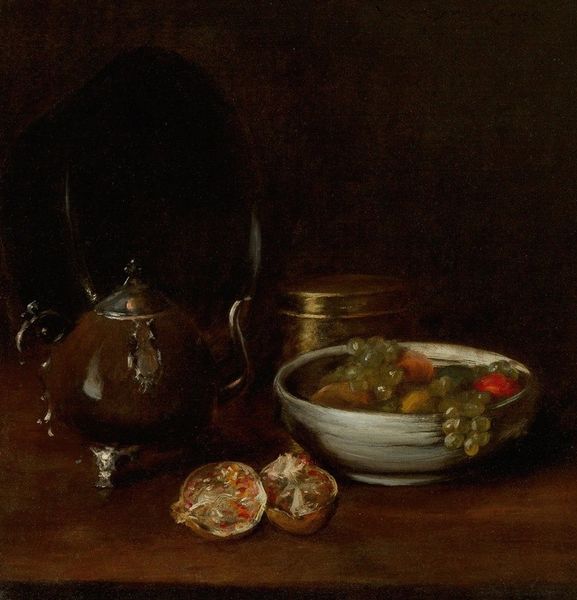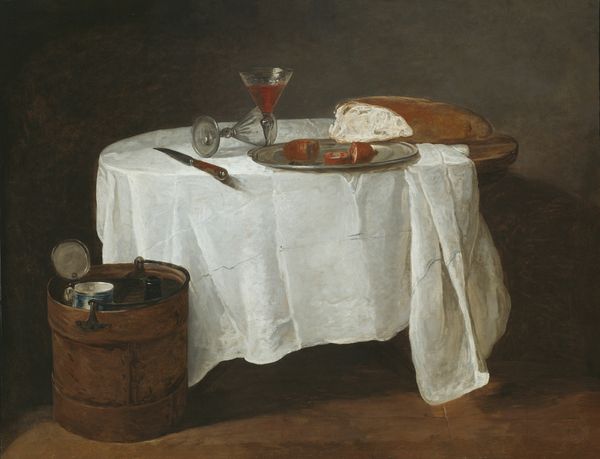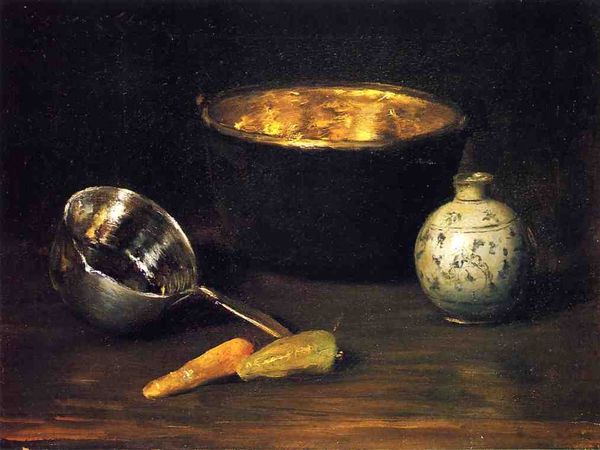
Copyright: Public domain
Editor: We're looking at Emil Carlsen's "Study in Grey" from 1906, an oil painting of what looks like simple kitchenware. What strikes me is the subdued palette. How do you interpret this work, given its historical context? Curator: The title itself "Study in Grey," already points to the socio-economic realities and artistic movements during that era. Think about the rise of industrialization and urbanization— how did these elements impact society's perception of labor and gender roles? Consider the subtle gradations within "grey"— aren't they referencing the artist's nuanced take on gendered labor roles? Editor: Gender roles? I hadn't thought of that! Curator: Absolutely! Notice the prominence of domestic tools in the piece: the pots, the cloth, the plain backdrop. Could this suggest the often invisible, underappreciated labor performed by women in the domestic sphere, particularly during the early 20th century? Carlsen emphasizes realism and stark presentation. The composition speaks to this marginalization by underscoring simplicity. What feelings does this evoke? Editor: There’s an austerity and sense of daily struggle— I guess I see a commentary on economic disparity. Curator: And in that same austerity, doesn't the emphasis on muted tones and domestic objects inadvertently comment on the opulence enjoyed by a privileged class? Editor: Yes, it does! So the 'grey' isn't just a color, it’s a symbol of these blurred social lines. I never would have seen that on my own! Curator: It is about recognizing these layers and seeing how even seemingly straightforward still life speaks to broader political and cultural narratives. Every shade carries a story! Editor: I’ll definitely keep that in mind moving forward. Thank you for that perspective!
Comments
No comments
Be the first to comment and join the conversation on the ultimate creative platform.
